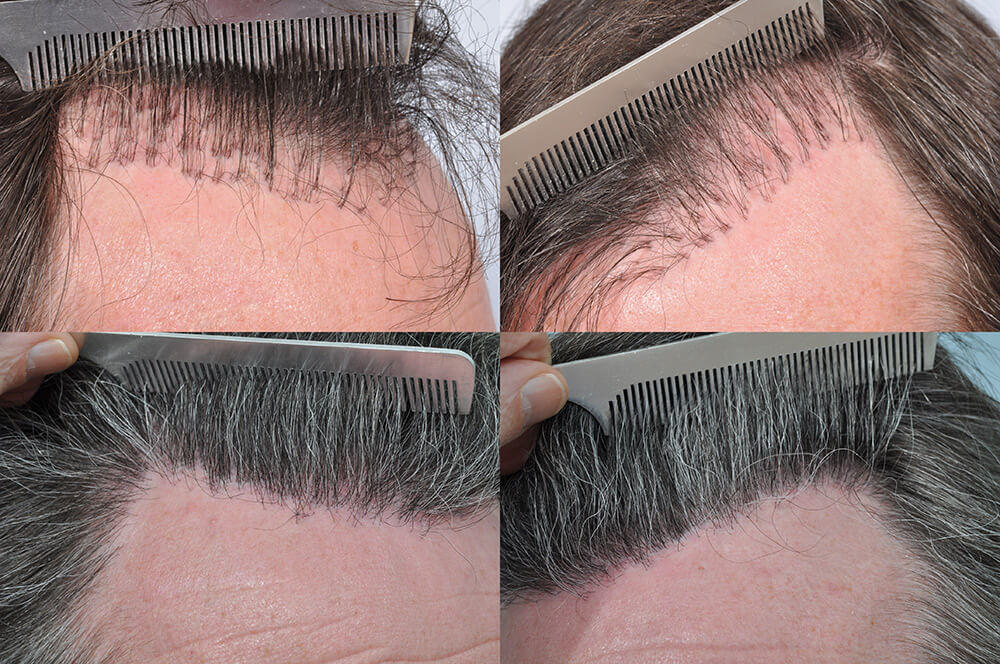Hair Plugs
Hair plugs utilize round grafts of hair to cover bald spots or thin areas on your scalp, yet are less natural looking than hair transplants, which use individual follicles to restore density to the scalp.
Over time, hair plugs became less relevant due to new techniques allowing for shorter surgery times and more natural-looking results with minimally invasive methods.
They are made of human hair
Although hair plug is no longer used by medical practitioners, the term still remains popularly. A hair plug refers to a small piece of scalp removed or “punched out” from behind your head and then transplanted onto areas of balding scalp – this old-style transplanting has been popular since 1950s.
Assuming they’re made from your natural hair, these large clumps of follicles give off an artificial appearance due to their size and spacing between each individual follicle. Think of them like rows of flowers planted at the entrance to your neighborhood – too evenly spaced and uniform to appear like they grew spontaneously!
Modern transplants use an efficient technique known as Follicular Unit Transplantation or Extraction (FUT and FUE), which involves carefully transplanting healthy follicles from the back of your head using tiny surgical incisions. FUE produces much better results than plugs but requires more time and dedication from professionals to complete successfully.
They are permanent
Hair plugs are a type of transplant procedure that uses round grafts of real hair to fill in areas that have become bald or thin. In contrast to FUE hair transplantation procedures which use individual follicles for transplanting purposes, these grafts offer more of a natural appearance – so much so that it may even be impossible to tell whether they’re real or fake!
Hair transplants are more advanced than hair plugs and offer superior results, yet many don’t understand their difference. Transplants look more natural while healing faster; furthermore, there are no side effects or risks involved compared with hair plugs.
Hair plugs were once an effective means of treating hair loss prior to the advent of FUE hair transplants, though not permanently; they simply cover your baldness while the source remains undetected and continues to worsen over time.
They are a cosmetic procedure
Hair plugs are a cosmetic procedure designed to restore and cover scarring from previous surgery, both by helping restore your hairline or covering up scars from previous operations. Performed via microsurgery under local anesthesia, your healthcare provider cuts tiny pieces of scalp that contain healthy hair from healthy areas on your head before transplanting them directly onto balding areas. Grafts come in various forms including strip, mini, micro, and slit grafts with differing quantities of follicular units contained per graft type depending on their hair density content.
Hair transplants are more advanced than hair plugs and provide more natural-looking results, even replacing your existing hairline if necessary. An ideal candidate for hair transplant is someone suffering from genetic hair loss such as male pattern baldness or female pattern baldness.
Hair transplants provide many advantages, from shorter surgery times and decreased risks of scarring to being more cost-effective in the long run than plugs, while also needing less care and maintenance than their traditional counterparts, which could potentially cause complications.
They are a surgical procedure
Hair plugs were once an increasingly common method for hair restoration until the early 2000s. They involved punching out large areas of skin and hair from behind your scalp and transplanting it onto areas with balding or thinning, often leaving noticeable gaps between transplanted hairs. Today however, modern FUT and FUE techniques use smaller grafts that produce much more natural-looking results and should replace this method entirely.
Hair transplantation is an advanced surgical technique that uses healthy follicles to cover areas with no or thinning hair, providing more permanent coverage than hair plugs. As these two procedures have different costs, benefits and drawbacks it’s essential that you fully understand their differences before making your choice between plugs or transplants based on factors like budget and area size.
Disclaimer: The content on this blog is intended for general informational purposes only. It is not a substitute for professional medical advice, diagnosis, or treatment. Always consult qualified healthcare providers for personalized advice. Information regarding plastic surgery, dental treatment, hair transplant, and other medical procedures is educational and not a guarantee of results. We do not assume liability for actions taken based on blog content. Medical knowledge evolves; verify information and consult professionals. External links do not imply endorsement. By using this blog, you agree to these terms.










